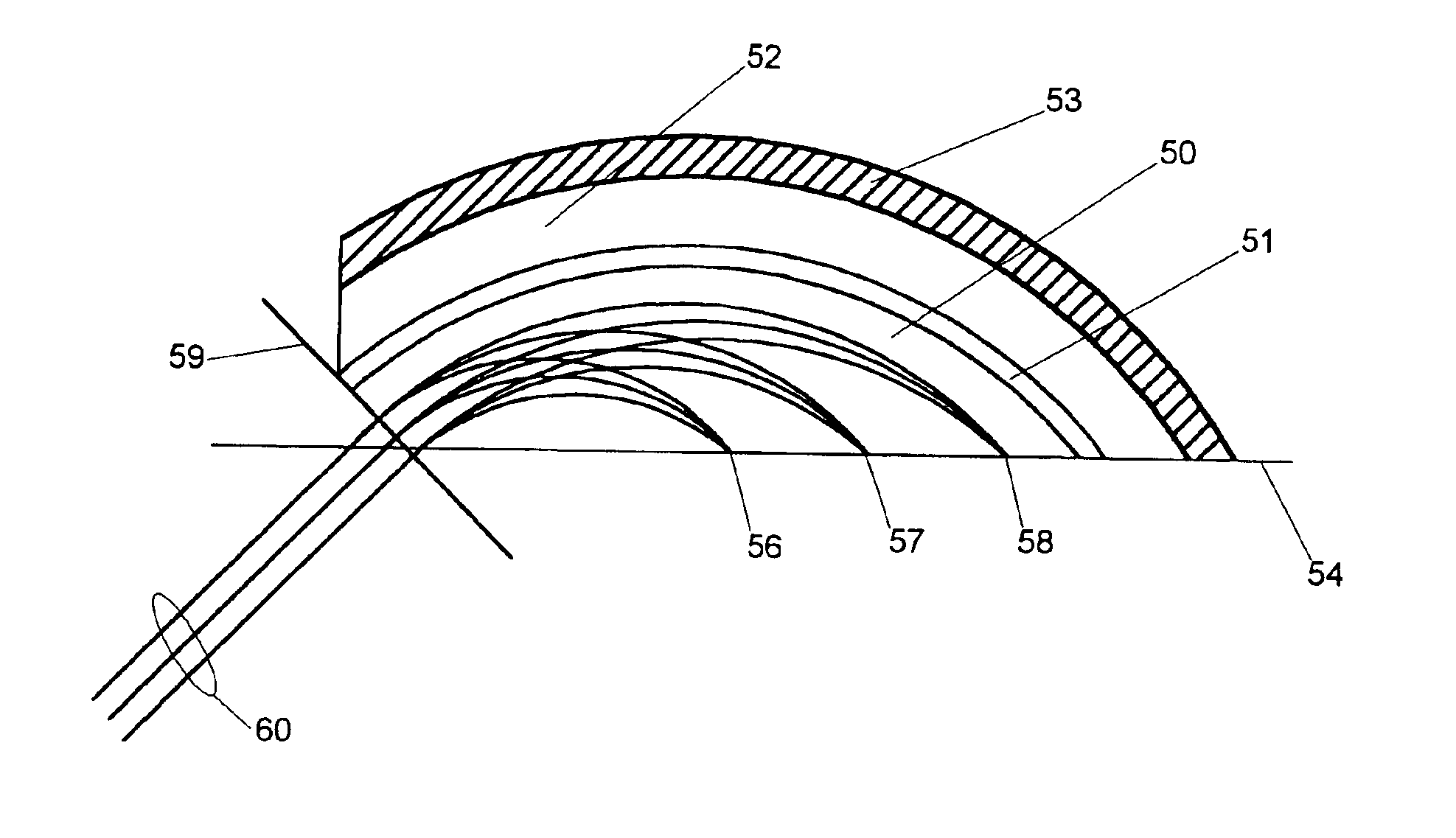Magnetic separator for linear dispersion and method for producing the same
a magnetic separator and linear dispersion technology, applied in the direction of particle separator tube details, separation processes, magnetic bodies, etc., can solve problems such as non-linear functions, and achieve the effects of reducing the total sector weight, minimizing the mass of the sector, and enhancing the efficiency of the magnetic circui
- Summary
- Abstract
- Description
- Claims
- Application Information
AI Technical Summary
Benefits of technology
Problems solved by technology
Method used
Image
Examples
Embodiment Construction
[0041]FIG. 1A is a schematic diagram of a permanent magnet separator with a uniform field in two planes known in the prior art which results in a square-root mass-energy-to-charge ratio dispersion of charged particles. It consists of two high magnetically permeable parallel poles 1 made from suitable iron alloy such as vanadium permendur with magnets 2 made from a suitable ferrite or rare-earth permanent magnet (REPM) such as neodymium iron boron. A high magnetically permeable yoke 3 completes the magnetic circuit by connecting the magnets 2. The gap 6 between the poles is carefully held parallel and symmetric about a center axis 80 in a plane transverse to the axis 5 and along the axis 5. The number and disposition of the permanent magnets 2 within the magnetic circuit is varied and they may be located anywhere within the magnetic flux path 3 and may even be incorporated into the back portion of the return yoke 66. The magnetic return yoke 3 and back yoke 66 are not required, but g...
PUM
 Login to View More
Login to View More Abstract
Description
Claims
Application Information
 Login to View More
Login to View More - R&D
- Intellectual Property
- Life Sciences
- Materials
- Tech Scout
- Unparalleled Data Quality
- Higher Quality Content
- 60% Fewer Hallucinations
Browse by: Latest US Patents, China's latest patents, Technical Efficacy Thesaurus, Application Domain, Technology Topic, Popular Technical Reports.
© 2025 PatSnap. All rights reserved.Legal|Privacy policy|Modern Slavery Act Transparency Statement|Sitemap|About US| Contact US: help@patsnap.com



